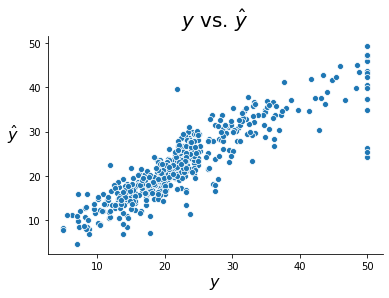GLMs¶
import numpy as np
import matplotlib.pyplot as plt
import seaborn as sns
from sklearn import datasets
boston = datasets.load_boston()
X = boston['data']
y = boston['target']
In this section, we’ll build a class for fitting Poisson regression models. First, let’s again create the standard_scaler function to standardize our input data.
def standard_scaler(X):
means = X.mean(0)
stds = X.std(0)
return (X - means)/stds
We saw in the GLM concept page that the gradient of the loss function (the negative log-likelihood) in a Poisson model is given by
where
The class below constructs Poisson regression using gradient descent with these results. Again, for simplicity we use a straightforward implementation of gradient descent with a fixed number of iterations and a constant learning rate.
class PoissonRegression:
def fit(self, X, y, n_iter = 1000, lr = 0.00001, add_intercept = True, standardize = True):
# record stuff
if standardize:
X = standard_scaler(X)
if add_intercept:
ones = np.ones(len(X)).reshape((len(X), 1))
X = np.append(ones, X, axis = 1)
self.X = X
self.y = y
# get coefficients
beta_hats = np.zeros(X.shape[1])
for i in range(n_iter):
y_hat = np.exp(np.dot(X, beta_hats))
dLdbeta = np.dot(X.T, y_hat - y)
beta_hats -= lr*dLdbeta
# save coefficients and fitted values
self.beta_hats = beta_hats
self.y_hat = y_hat
Now we can fit the model on the Boston housing dataset, as below.
model = PoissonRegression()
model.fit(X, y)
The plot below shows the observed versus fitted values for our target variable. It is worth noting that there does not appear to be a pattern of under-estimating for high target values like we saw in the ordinary linear regression example. In other words, we do not see a pattern in the residuals, suggesting Poisson regression might be a more fitting method for this problem.
fig, ax = plt.subplots()
sns.scatterplot(model.y, model.y_hat)
ax.set_xlabel(r'$y$', size = 16)
ax.set_ylabel(r'$\hat{y}$', rotation = 0, size = 16, labelpad = 15)
ax.set_title(r'$y$ vs. $\hat{y}$', size = 20, pad = 10)
sns.despine()

